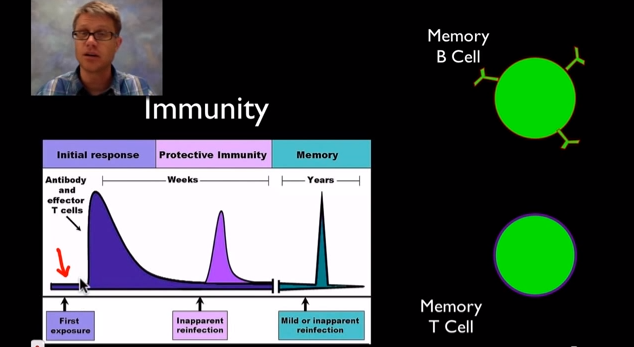Nonspecific - Wall and Soldiers
Specific - Spies
Antigens - Invaders
Provides an immediate nonspecific immune response
Innate,
or nonspecific, immunity is the defense system with which you were born. It
protects you against all antigens. Innate immunity involves barriers that keep
harmful materials from entering your body. These barriers form the first line
of defense in the immune response. Examples of innate immunity include:
- Cough reflex
- Enzymes in tears and skin oils
- Mucus, which traps bacteria and small
particles
- Skin
- Stomach acid
Innate immunity also comes in a protein chemical
form, called innate humoral immunity. Examples include the body's complement
system and substances called interferon and interleukin-1 (which causes fever).
If an antigen gets past these barriers, it is attacked
and destroyed by other parts of the immune system.
Activates T and B cells in response to an infection
BLOOD COMPONENTS
The immune system includes certain types of white
blood cells. It also includes chemicals and proteins in the blood, such as
antibodies, complement proteins, and interferon. Some of these directly attack
foreign substances in the body, and others work together to help the immune
system cells.
Lymphocytes are a type of white blood cell. There
are B and T type lymphocytes.
- B lymphocytes become cells that produce
antibodies. Antibodies attach to a specific antigen and make it easier for
the immune cells to destroy the antigen.
- T lymphocytes attack antigens directly and
help control the immune response. They also release chemicals, known as
cytokines, which control the entire immune response.
As lymphocytes develop, they normally learn to tell
the difference between your own body tissues and substances that are not
normally found in your body.
Responds to a later exposure to the same infectious agent
Once B cells and T cells are formed, a few
of those cells will multiply and provide "memory" for your immune
system. This allows your immune system to respond faster and more efficiently
the next time you are exposed to the same antigen. In many cases it will
prevent you from getting sick.
Self and Non-Self
Every body cell
carries distinctive molecules that identify it as self. The body's immune defenses do not normally attack tissues that carry a
self marker. Rather, immune cells and other body cells coexist peaceably in a
state known as self-tolerance. But when immune defenders encounter cells or organisms carrying
molecules that say "foreign," the immune troops move quickly to
eliminate the intruders.
Cite source:
http://printer-friendly.adam.com/content.aspx?productId=117&pid=1&gid=000821&c_custid=758
http://thyroid.about.com/library/immune/blimm02.htm
Cite source:
http://printer-friendly.adam.com/content.aspx?productId=117&pid=1&gid=000821&c_custid=758
http://thyroid.about.com/library/immune/blimm02.htm



No comments:
Post a Comment